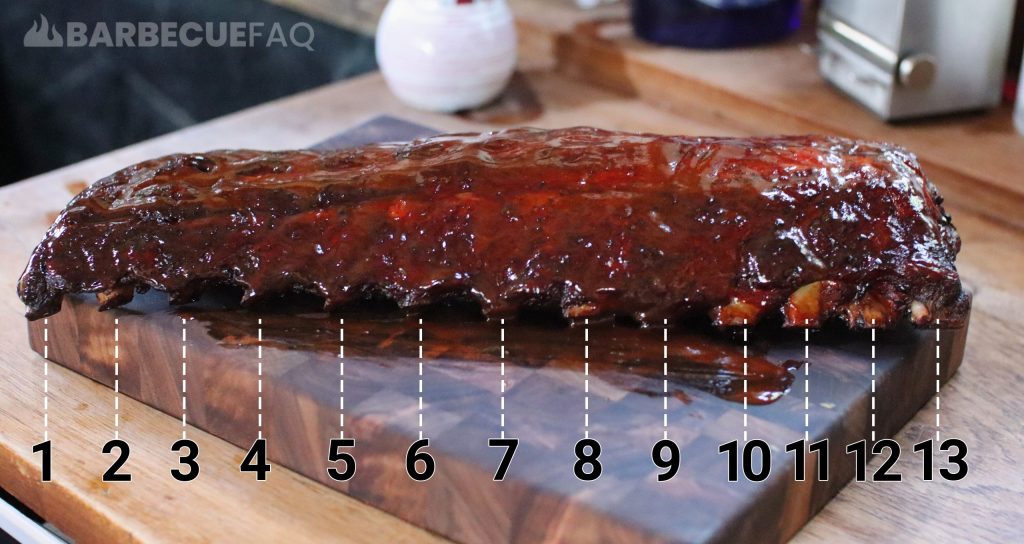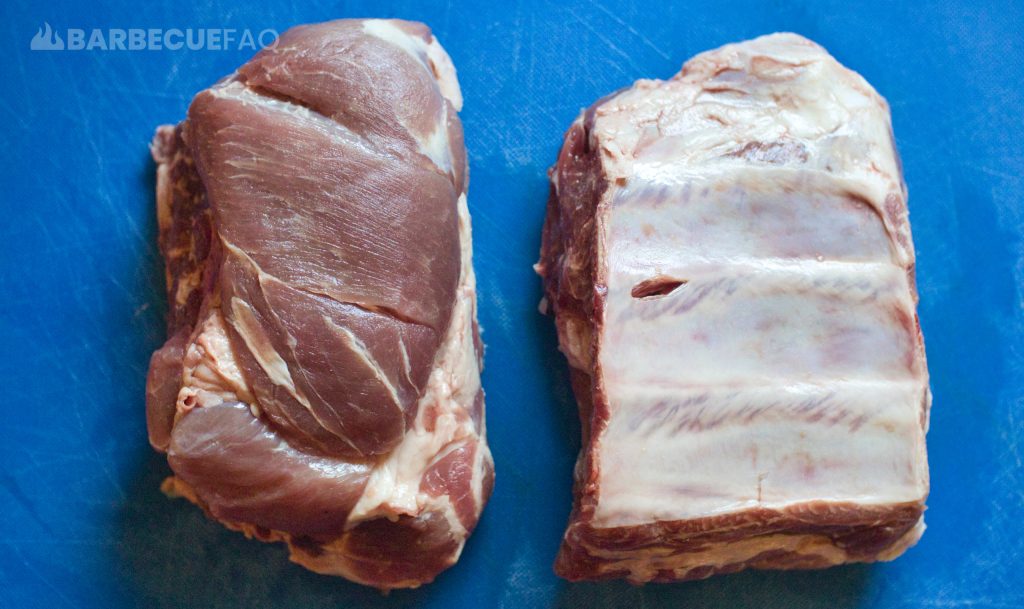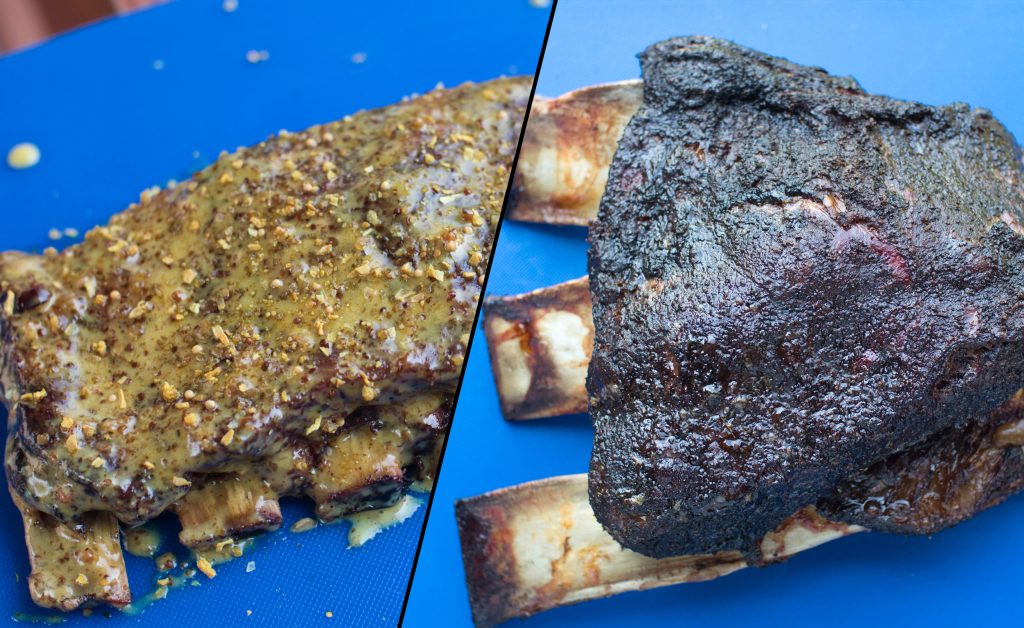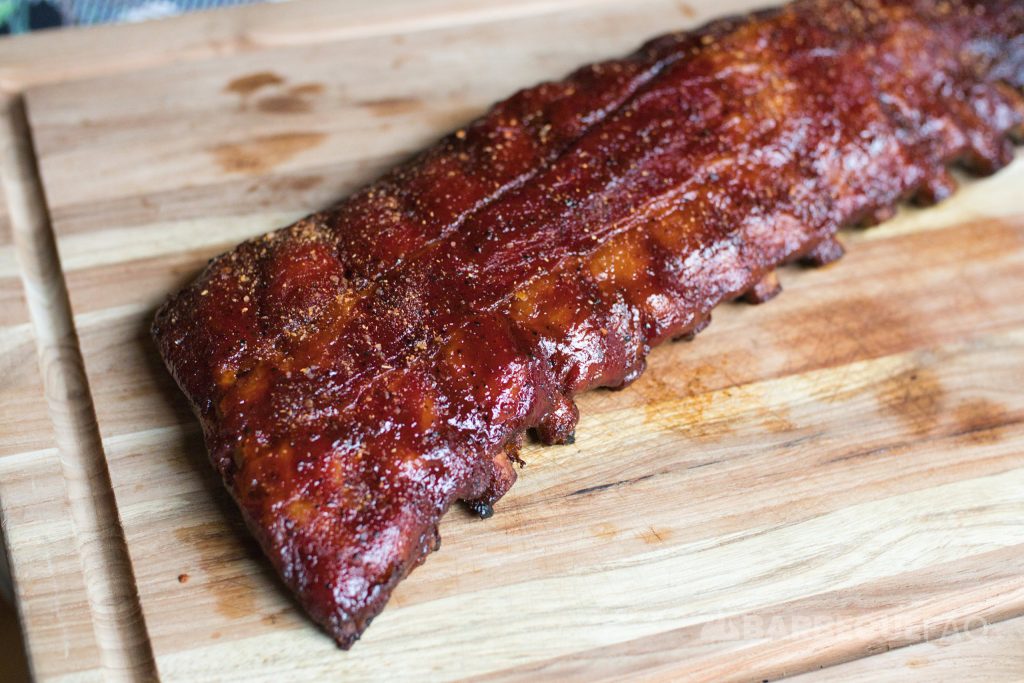A typical slab or “full rack” of pork ribs contains 10-13 ribs.
A “half rack” would have 5-7 ribs.
Count them with me:

Rib number 1, 12, and 13 have very little edible meat – but it’s still 13 rib bones.
At home I’d likely remove rib 1 and make 12 and 13, one rib.
Terminology to Understand like “Rack” or “Slab”
Butchers sell pork ribs as “slabs.”
Slab = full rack.
Unless you’re at a barbecue joint buying ribs, you’ll likely see them sold as a “full rack” or “half rack.”
Pigs have 15-16 “Rib Bones” But Not All of Them are in a Full Rack of Ribs
When a hog is butchered, 2-3 bones are left in the pork shoulder.
These aren’t common at all but they’re labeled “pork short ribs.”

Smaller bones are also trimmed with the discretion of the butcher.
In a grocery store, you should expect to see at least 10 bones in a slab or full rack of pork ribs.
Does a Full Rack refer to Baby Back Ribs or Spare Ribs?
When ordering from a restaurant (not a barbecue joint), the ribs you’re likely eating are baby back ribs.
If you’re eating at a barbecue joint, they will likely make the distinction and state whether the rack is spare ribs or loin back ribs.
There are specific differences between spare ribs and baby back ribs, however, if a pig has 10-13 spare ribs, it will also have 10-13 baby back ribs.
In terms of serving sizes:
- Baby back ribs will typically offer 1 – 2 serving sizes; Hence full rack (1 serving) or half rack (2 servings).
- Spare ribs will offer 2-4 servings because the ribs are bigger.
Spare ribs can be sold as a whole “slab” or are often trimmed to what’s called a “St. Louis Cut” or “Center cut” spare ribs.
What do Popular Restaurants Consider to be a “Full Rack”
Common family restaurants that sell ribs:
- Chili’s website shows a picture of a full rack of pork ribs with 10-11 rib bones.
- Applebee’s website shows a picture of a full rack of pork ribs with 11+ rib bones.
- Longhorn Steak House shows a picture of a full rack with 11+ rib bones.
Note: All of these restaurants sell baby back ribs.
At a BBQ joint you’ll buy spare ribs based on $ / lb.





8 comments
MIKE L STORER
really great info ,thank you ! have ribs once a month usually do them myself as finding a reliable,consistant rib man is hard to find.
Dylan Clay
Happy to help Mike!
Gye
Thanks!
Dylan Clay
Happy to help Gye!
Jojo
Thank you for the information about rib counts. I always wonder if I’m “really” getting a full rack of ribs when I order at restaurants.
Dylan Clay
Happy to help!
Marv Siesel
The very best information I have ever seen on ribs I have been a butcher over 65 years and this is the absolute best information on ribs I have ever seen. Thanks Marv
Dylan Clay
Appreciate the kind words Marv, it means a lot.